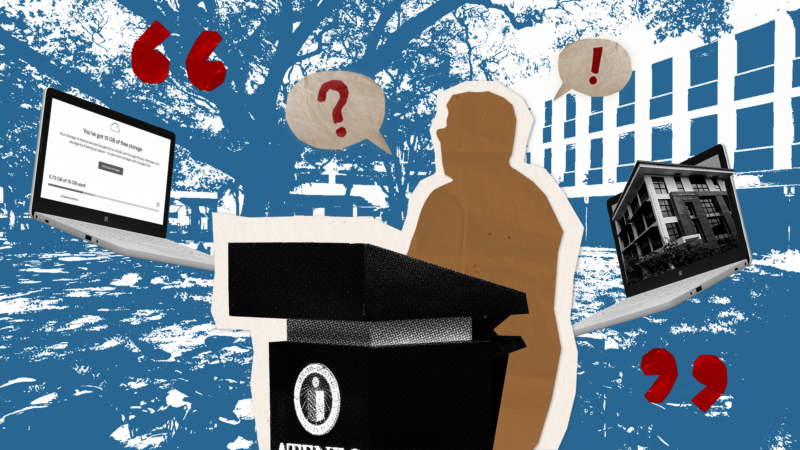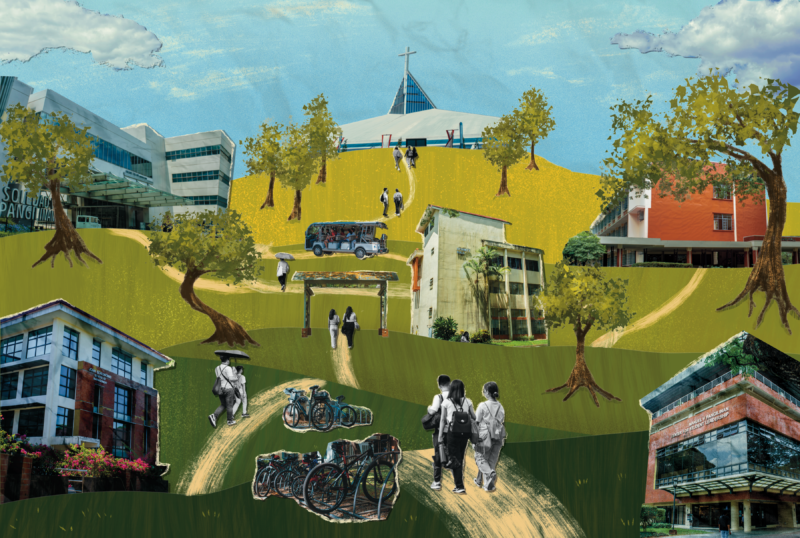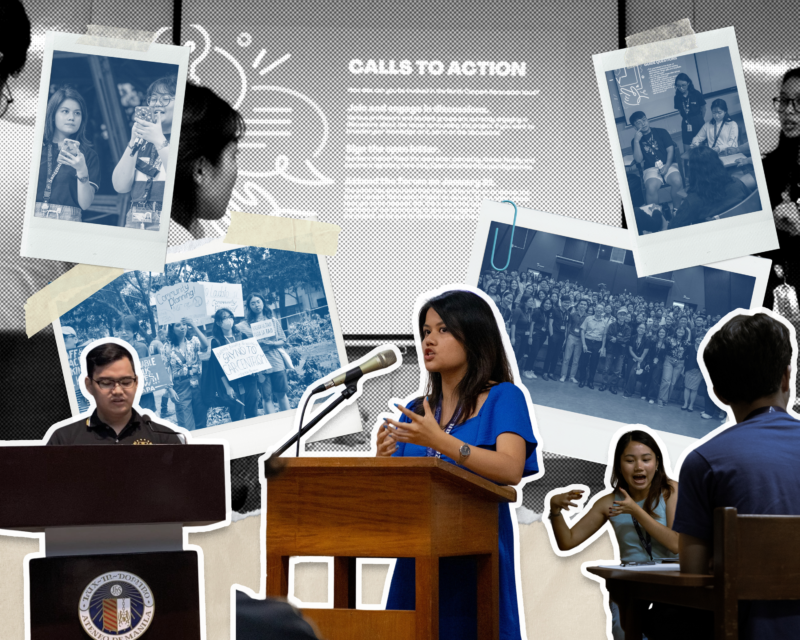IN AN effort to provide further support for the school’s varsity teams and sports clubs, the Sanggunian released a memorandum on February 24 announcing their plans to create a Magna Carta for Student Athletes (MCSA).
According to MCSA Technical Working Group (TWG) Head Jerard Afable, the charter will have four goals that will serve as a guide in crafting the Magna Carta: Promoting and protecting the rights of student-athletes, demanding full transparency from all stakeholders, ensuring a safe environment, and recognizing student-athletes’ hard work.
In the Loyola Schools, there are 20 varsity teams and six sports clubs. Afable claimed that the majority of these teams have no guaranteed rights and privileges when it comes to financial support and transparency from concerned offices such as the College Athletics Office (CAO) and the Office of Student Activities (OSA).
The Department of Student Rights Chair Moirah Isabelo said that the proposed charter will be a separate document from the current Magna Carta for Student Rights, which was successfully amended in 2019. This decision was made since the existing charter for student rights might not be able to encompass the specific needs of the athletes.
Afable said the MCSA is targeted for release in two years as the MCSA needs to go back and forth through stakeholders and offices. The Sanggunian aims to complete the first draft by the first semester of the academic year 2020-2021. However, given the suspensions brought about by the COVID-19 pandemic, Afable noted the possibility of pushing back their timeline.
Yellow cards
While drafting the MCSA, Afable approached several sports teams that have encountered recurring issues with finances and transparency from offices. Sports club Ateneo Blue Raiders President Avin Chugani and non-UAAP varsity team member Celia* said that their respective teams shoulder many of their expenses. These include tournament fees, spending for uniforms and equipment, transportation expenses, airfare costs for competitions, and even payments for using training spaces on campus.
“Entering into tournaments, [some student athletes end up] using their own money [even though] they’re representing Ateneo,” Afable said.
For instance, Celia said that their team had to shoulder most of their expenses when they participated in an international tournament in 2019. The airfare price for one person on a return trip reached Php 10,000 alone.
Chugani also said that his team had to pay for their transportation to tournaments: “We still shoulder the cost for that…There are times we end up paying around Php 30,000-40,000 just for the bus.”
In response to this, CAO Coordinator Benjamin Afuang explained that the CAO does not have enough funds to shoulder these costs: “As much as we would want to provide them assistance for this, unfortunately [CAO] does not have the budget for international competitions.”
Afuang further clarified that the University Athletics Office only handles the budget University Athletic Association of the Philippines (UAAP) teams, while CAO handles the budget of non-UAAP teams.
Chugani said that one other issue teams have raised is transparency. Although all sports club budget proposals were approved by OSA at the start of the semester, he said that no money was given to his team. The budget proposal goes through multiple offices such as OSA, the Central Accounting Office, and Office of the Associate Dean for Student Formation, and Afable explained that the student-athletes get lost in the process and are unable to pinpoint which office might have caused the withholding of funds.
“All of our expenditures last [semester] were done thinking that we would be able to [get] reimburse[d] from the budgets,” said Chugani.
OSA Formator for the Sanggunian Neil Reyes clarified that the budget proposal submitted by the Sanggunian was based on the varying requests of each non-varsity sports club, which was later collated into one total amount approved by OSA. However, he stressed that this allocated budget is “disbursed through reimbursement as per agreement” with the concerned Sanggunian officials.
“The agreed upon mode of disbursement for these funds is through reimbursement,” Reyes said. “[The budget] is not just given to [the non-varsity sports clubs].”
Fair game
Since UAAP teams are directly under the supervision of UAO, Afable said that the MCSA can be used as a document for defense in cases wherein the UAO does not “honor their word” to the UAAP athletes.
As early as February 17, focus group discussions were already held with individual representatives from five voluntary sports teams and the MCSA Technical Working Group (TWG). Currently, the TWG is composed of Sanggunian members who conduct these meetings and work directly on the MCSA.
The TWG will also conduct a comparative analysis between the rights of athletes in other universities and review the Philippine Magna Carta for Student Athletes or Senate Bill No. 1194, an act that “aims to provide appropriate recognition to the rights and general welfare of student-athletes.”
Once the MCSA is approved by the University President’s Council, the student-athletes will have set protocols to defend themselves against violations, a seat at the budget table, Sanggunian student representation in the UAO, and better overall recognition and support from the University.
Looking to the future
With an impending charter for the MCSA, Chugani and Celia, together with other sports clubs and varsity team student-athletes in the University, hope that the magna carta will resolve their long-standing issues with financial support, among others.
Chugani also emphasized the need for “transparency between the offices that [student-athletes are] concerned with.” For him, it is important that they know what the budget allocation is for the team and which offices are involved in handling their money.
With the MSCA, student-athletes will be given the right to know the breakdown of their budget, to have reimbursements processed within a month, and to have anything past that subject to complaint.
Though the consultation and drafting process will take time, Afable reassured that current student-athletes understand and are hopeful for the future of those athletes after them.
“We explained [that] the timeline [for the MCSA] is around two years pa,” he said. “There’s a general consensus [that] this will be more for the next generation of athletes than for us.”
*Editor’s note: The name of one interviewee has been changed upon their request in order to protect their identity and privacy.
ERRATUM: An earlier version of this article stated that the CAO is responsible for the budgets of both UAAP and non-UAAP varsity teams. It also reported an interviewee’s claim that budgets of UAAP teams are prioritized over those of non-UAAP teams. However, the CAO is only in charge of non-UAAP varsity teams, while the UAO handles teams who participate in the UAAP, respectively. The article has been edited accordingly. We apologize for the oversight.







